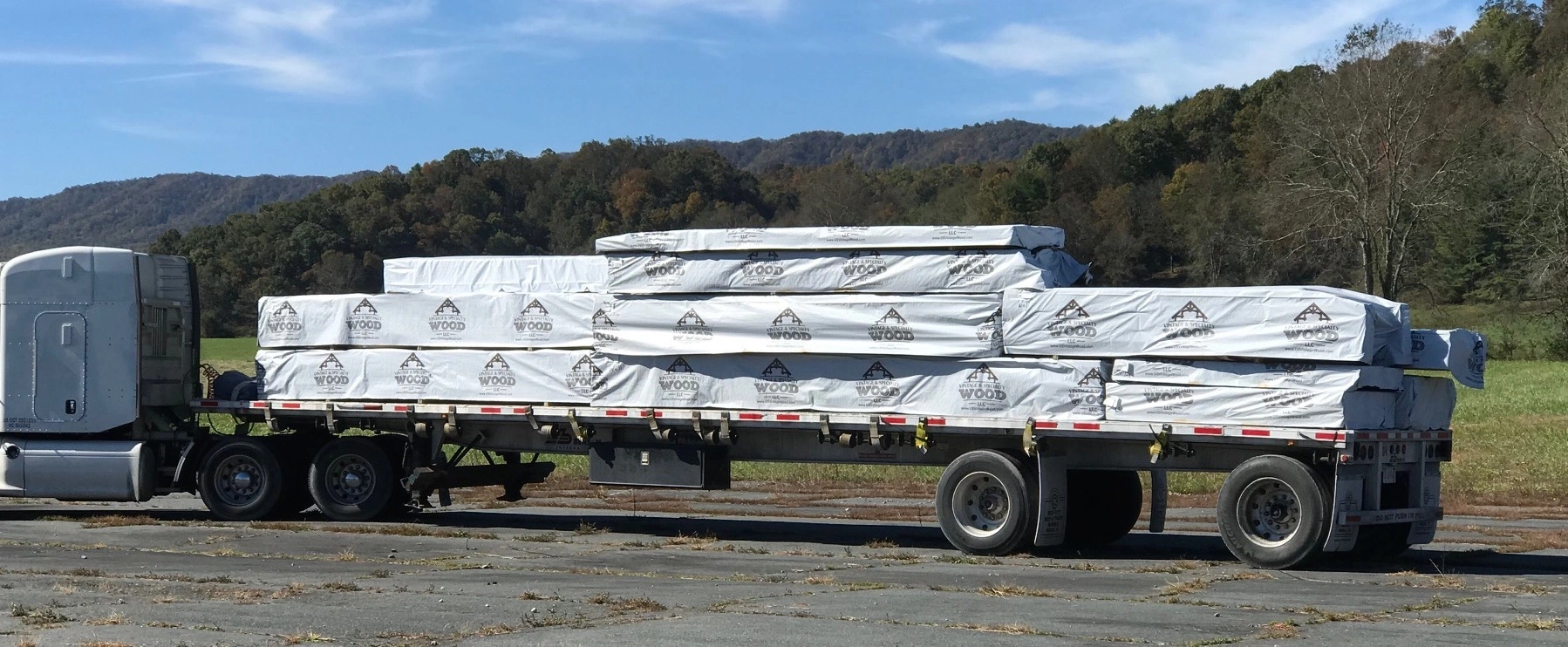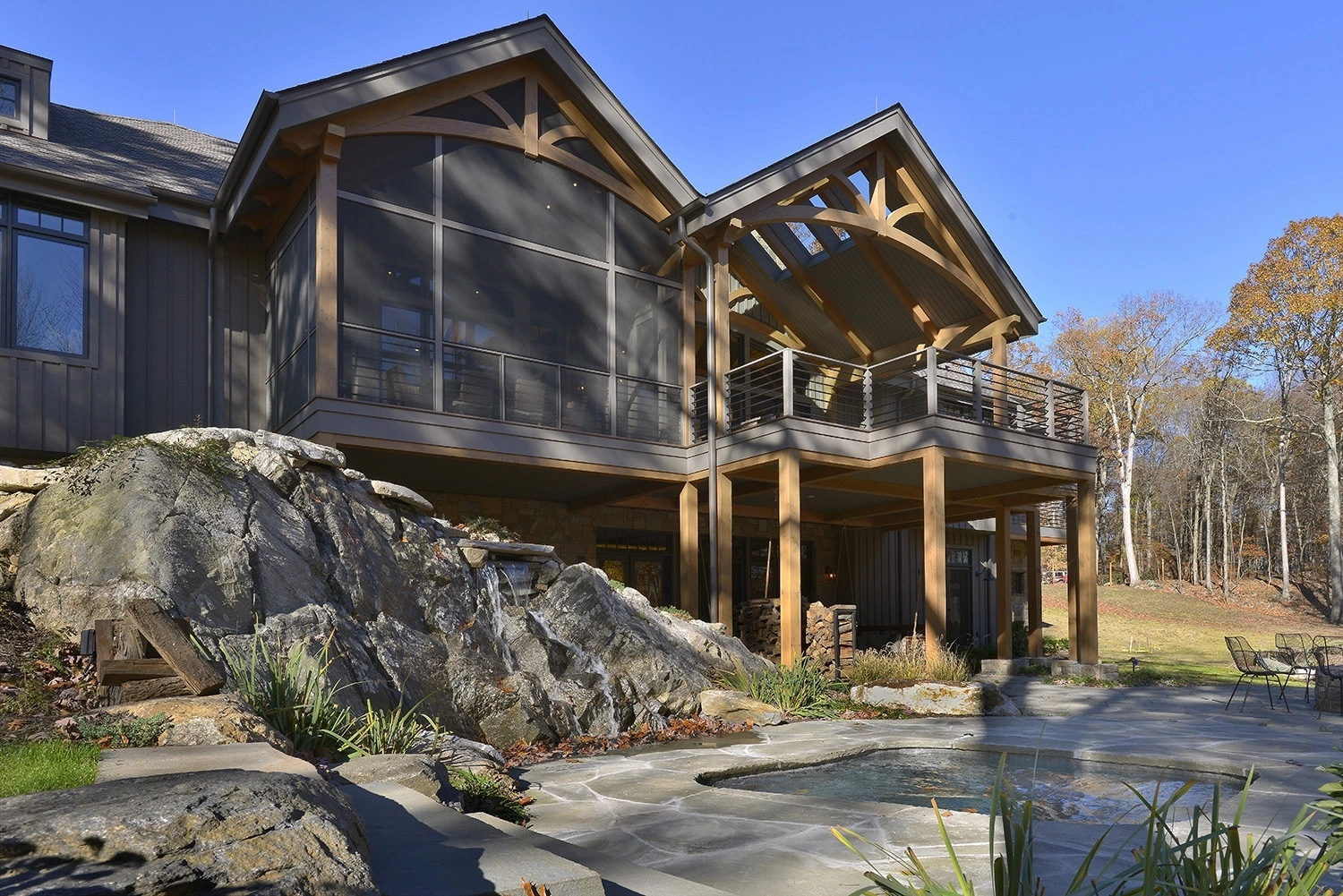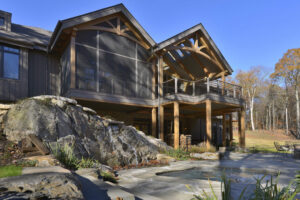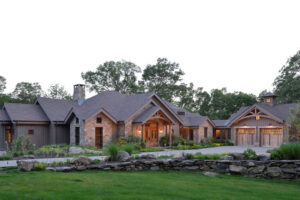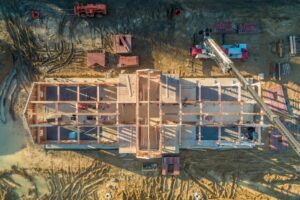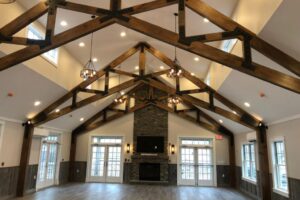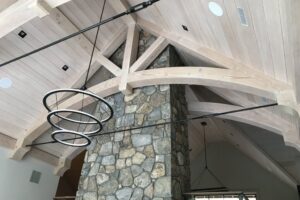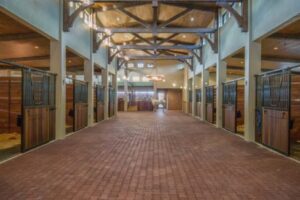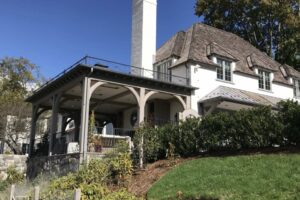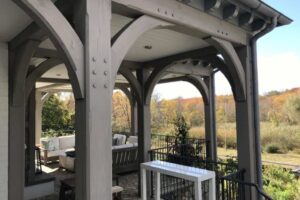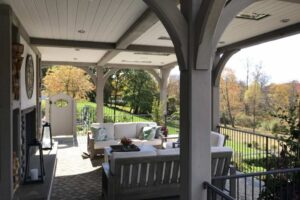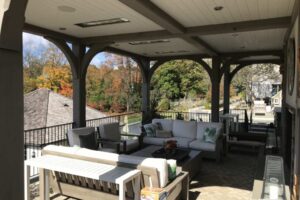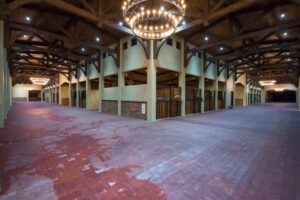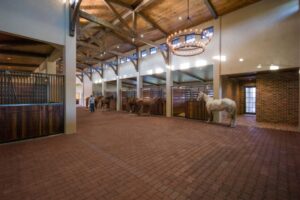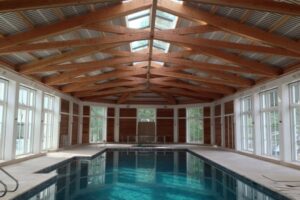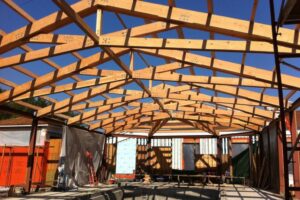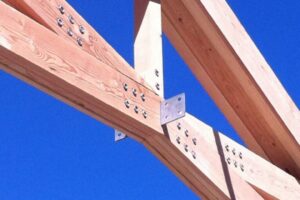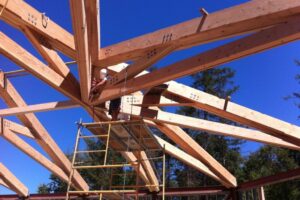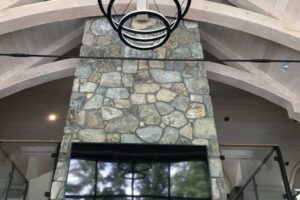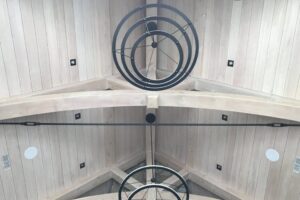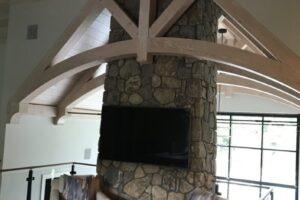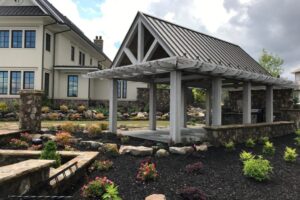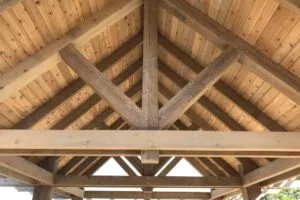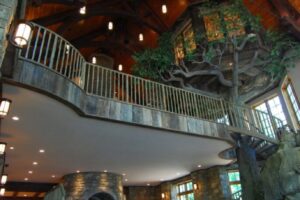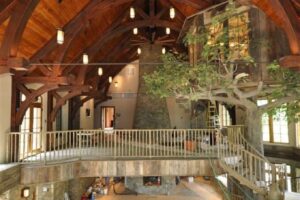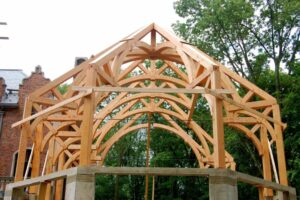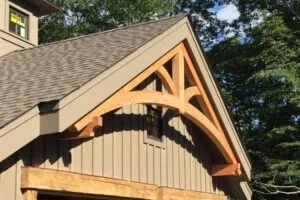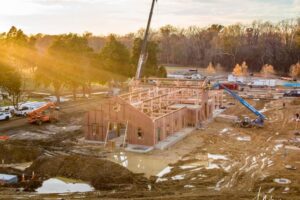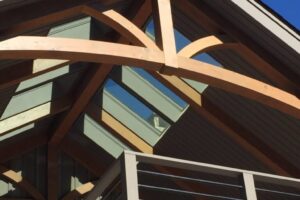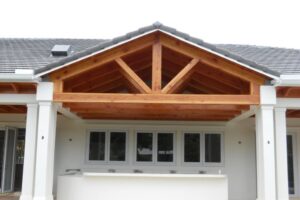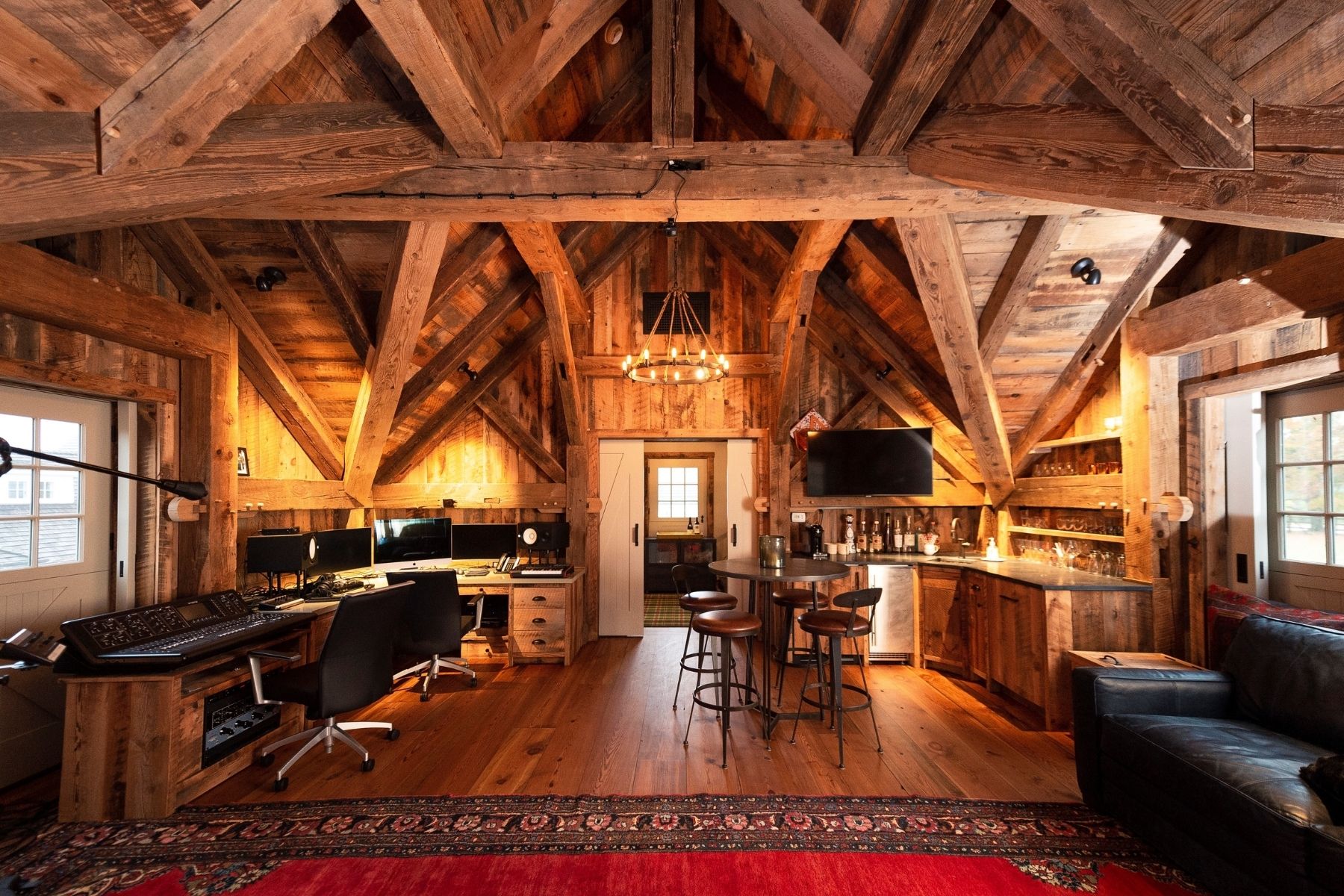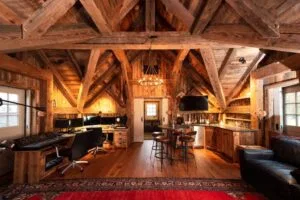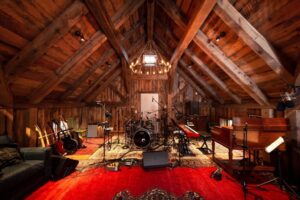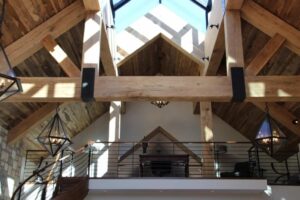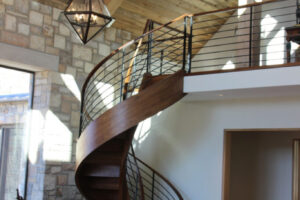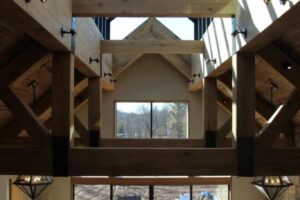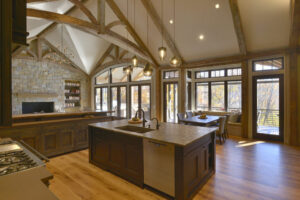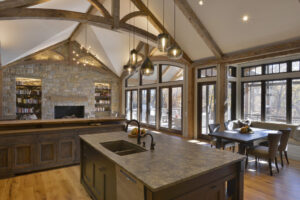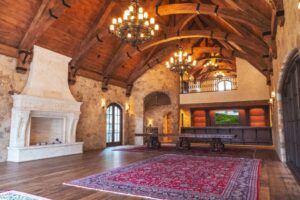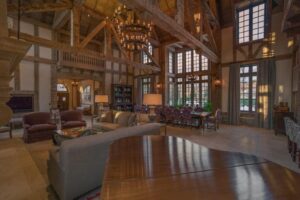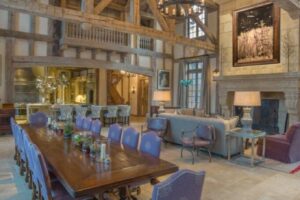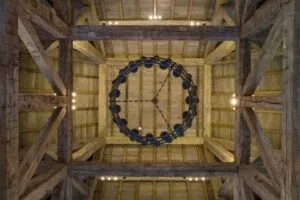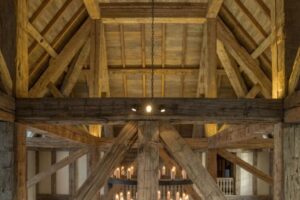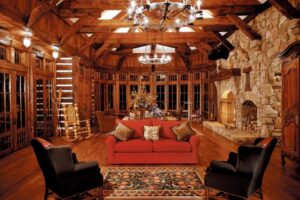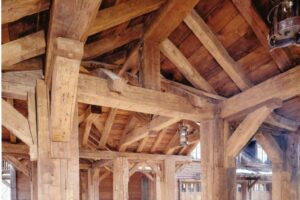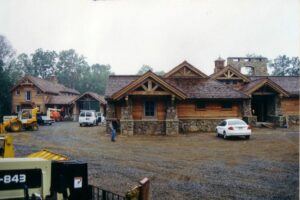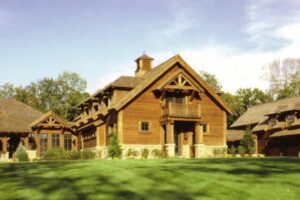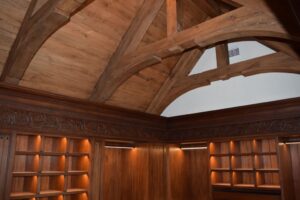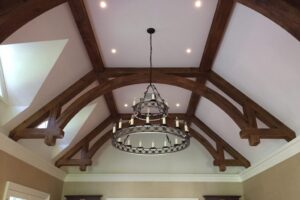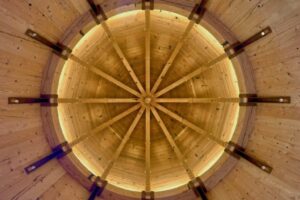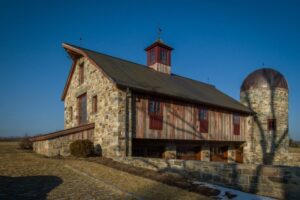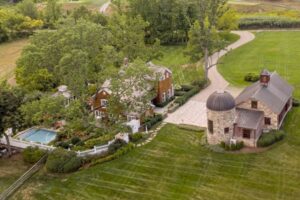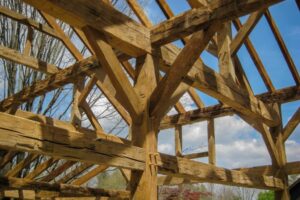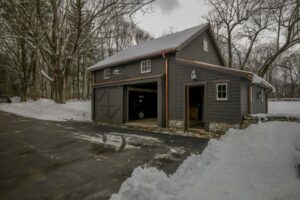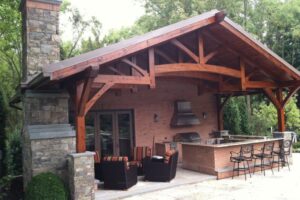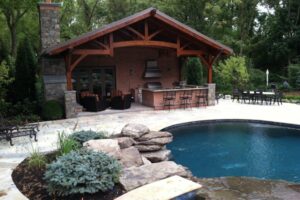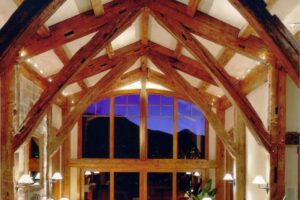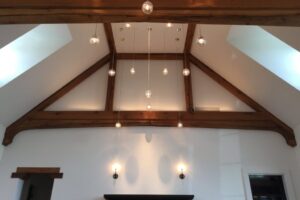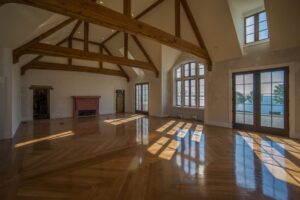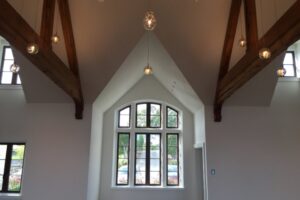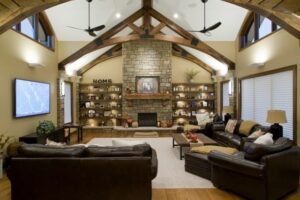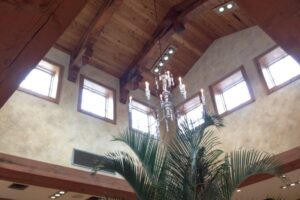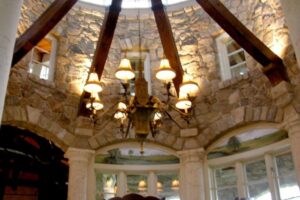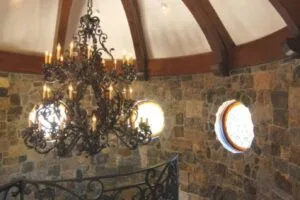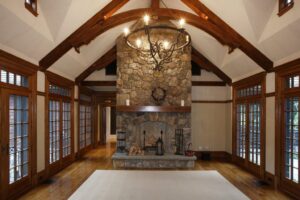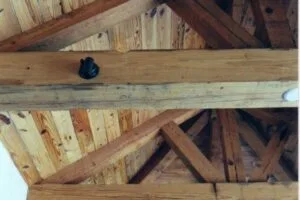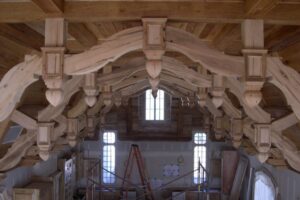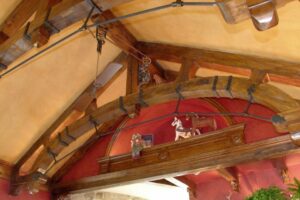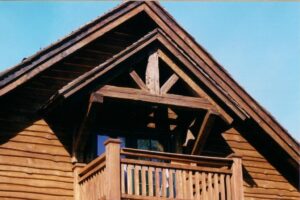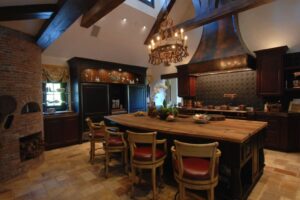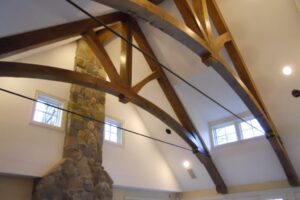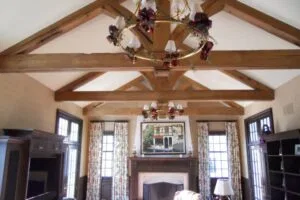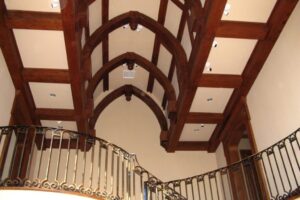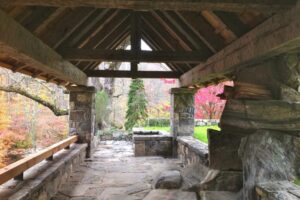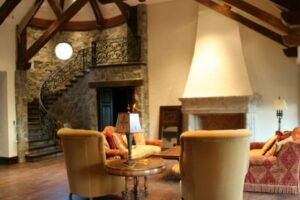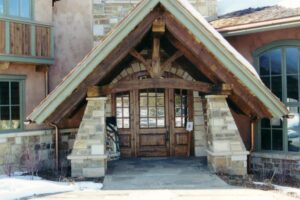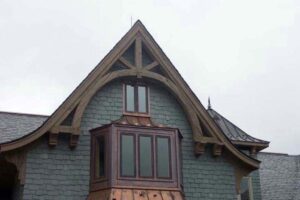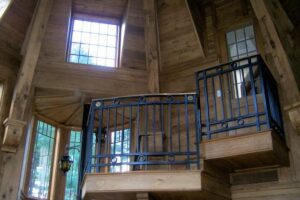Heavy Timber Framing Services
Our heavy timber framing experts will bring your vision to life, crafting sturdy structures with timeless charm. Contact us today to build something extraordinary.
Contact Us: (561) 405-6433
At Vintage & Specialty Wood, we bring wood to life. We transform reclaimed treasures and freshly milled timber into stunning art. Our services include timber frames, intricate trusses, and decorative beam ceilings. Craftsmanship and character define each project, making every creation unique.
Our timber framing services deliver your vision with unmatched precision and artistry:
- Meticulous planning: Every project begins with a site visit. We take precise measurements to ensure flawless execution.
- Visionary design: Bring your ideas to life with custom 3D models or detailed 2D plans, crafted with precision to meet your unique needs.
- Expert fabrication: Our artisans transform raw timber into impressive structures. In our advanced facility, they blend traditional skill with modern efficiency.
- Seamless installation: Our professional team offers nationwide installation. We meticulously assemble your timber frame to the highest standards. We can install your project no matter your location.
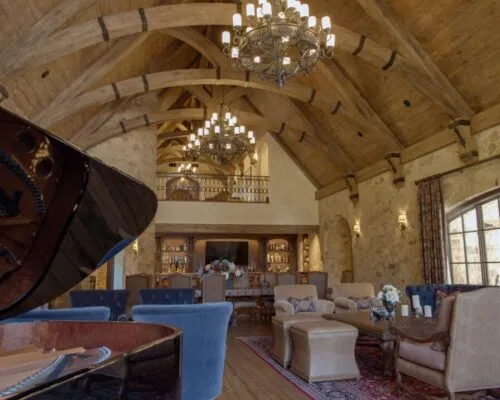
What is Timber Framing?
Imagine architecture as art, where strength meets soul. Timber framing is a legacy of craftsmanship. Sustainably sourced timber beams are joined with intricate wooden connections. A time-honored method is the mortise and tenon joint. This creates robust, breathtaking spaces. It allows open plans and redefines spacious living.
Timber framing adds warmth and character to any home. The exposed beams offer structural support and create a cozy atmosphere. It’s a timeless look that blends architectural heritage with great functionality.
Trusses & Timber Framing – New Material
Trusses & Timber Framing – Reclaimed Material
History of Timber Framing
The origin of timber framing may be unknown, but its creativity endures across many cultures and centuries. From ancient communities to historic empires, this method has shaped distinctive skylines and offered shelter that lasts.
Timber framing has deep roots in history, dating back to 200 BC in India. Ancient Japanese architecture also used timber frames. Many structures have lasted for centuries. The Horyuji Temple in Nara, Japan, is the oldest wooden building in the world. It shows timber framing’s enduring strength.
This technique thrived in forested regions, so timber-framed buildings are common in Europe and Asia. They are rare in places like Russia and Siberia, where forests are sparse.
Timber-framed structures define much of Europe’s medieval architecture, gracing castles, manor houses, pubs, and inns. These enduring wooden frameworks reflect the ongoing spirit of craftsmanship and tradition.
Many of these structures have been thoughtfully renovated over time. Their original timber frames often remain strong, standing as a testament to the reliability and endurance of this legacy.
When European settlers arrived in the US, they brought centuries of construction expertise. Surrounded by vast forests, they used the abundant timber. Their structures were inspired by their homelands but adapted to a unique American style.
The 20th century marked a significant shift. The Industrial Revolution introduced speed and mass production. Demand grew for quicker, cheaper housing. Timber framing, a time-consuming craft, could not compete. Dimensional lumber became the faster, more affordable choice.
In the 1970s, a group of artisans revived the ancient craft of timber framing. Their work saved it from near obscurity. This brought the traditional art back to modern architecture.
Today, stricter building codes and ambitious designs mean timber framing is seldom used alone. Instead, it’s paired with other systems, creating hybrids that combine their strengths.
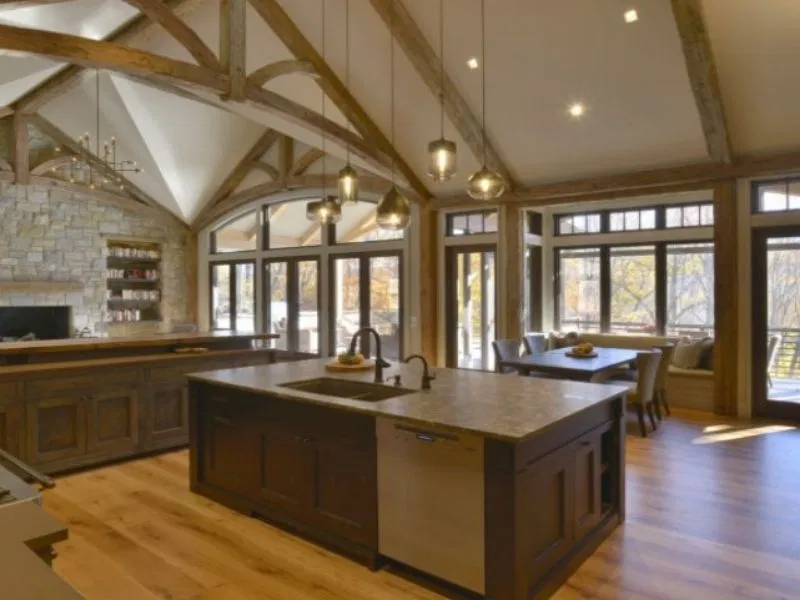
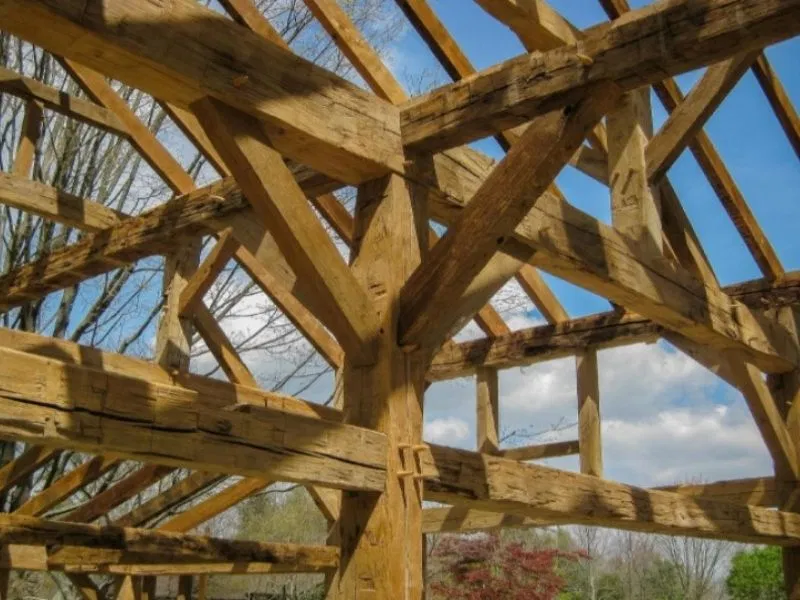
Key Timber Framing Terminology
Timber framing is an art form that blends beauty and strength. To truly appreciate this timeless craft, understanding its essential terminology is key. Let’s explore some core terms that bring timber framing to life:
Joinery
Timber framing uses precisely interlocking wooden pieces, like mortise and tenon joints, creating strong, beautiful connections without metal fasteners.
Structural Insulated Panels (SIPs)
SIPs are high-performance panels that wrap around a timber frame, providing excellent insulation, structural support, and energy efficiency.
Raising
The timber frame takes shape as vertical beams seamlessly lock into horizontal supports, a key step in the construction.
Built-up Infill Wall
Non-load-bearing walls are common in timber frames. They are often built with masonry. This helps support exterior cladding and withstand the elements.
Mortise and tenon
This classic joinery technique uses a tenon (a projecting piece of wood) fitted snugly into a mortise (a corresponding hole), creating a powerful, strong connection with a clean finish.
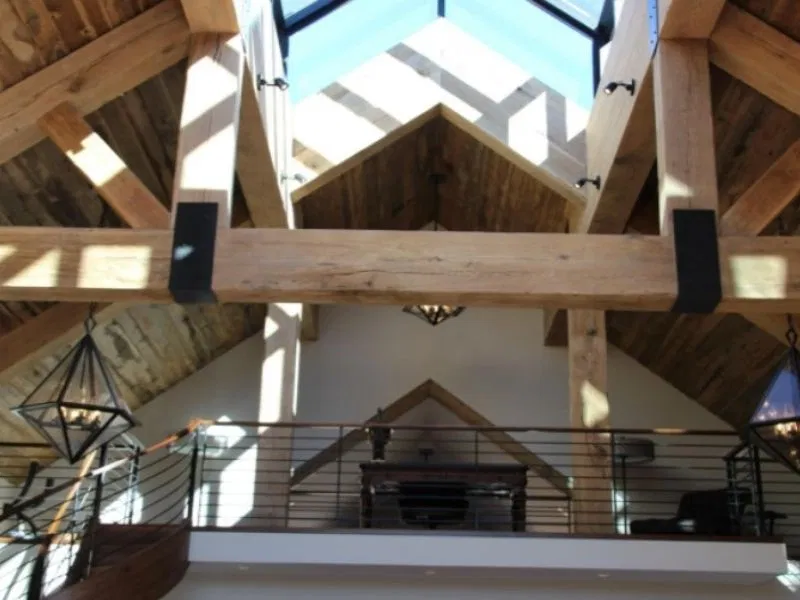
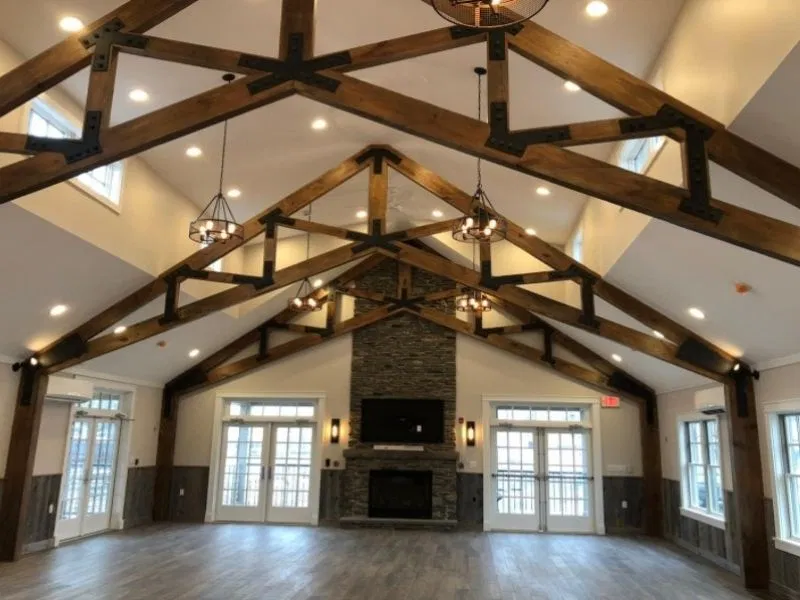
Lap Joints
Timber members are bonded with adhesives. This provides excellent shear strength. It also offers versatility for diverse construction methods.
Scarf Joint
This joint connects shorter timber pieces by tapering their ends, forming a single, long, strong beam.
Sill Plate
It’s the horizontal beam in timber frames. It supports wall framing and floor joists. This ensures structural strength and stability.
Girt
Girts are horizontal beams in a timber frame that connect posts and sills, strengthening the structure. They provide essential lateral support and wind resistance, ensuring durability.
Cross-Laminated Timber (CLT)
CLT is changing sustainable construction. It offers modern efficiency and classic design. This raises eco-friendly building standards.
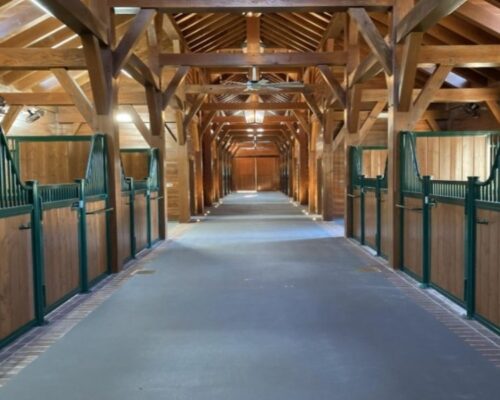
Why Use Timber Frames?
For sustainable builders, timber frames are more than a preference—they’re essential. Discover the key benefits that set them apart in modern construction:
Eco-friendly construction
Timber frames represent eco-friendly construction at its best. With a minimal environmental footprint, they utilize renewable resources and green building practices. Locally sourced wood lowers transport emissions, while the building process creates little waste.
Reduced Site Labor and Costs
Shifting construction tasks off-site reduces the reliance on on-site labor and heavy machinery. This approach streamlines the building process, lowering costs and increasing efficiency.
Accelerated building time
Pre-fabricated timber parts mean faster on-site assembly. This shortens construction timelines and lets other trades start work sooner.
Durability and longevity
Timber frames, far from fragile, are robust and, with proper care, naturally resist rot and infestation. This inherent resilience ensures your structure is built to last for generations.
Optimized material use
Manufacturing timber in a controlled factory environment maximizes its use. This process drastically cuts down on material waste.
Superior thermal performance
Timber has excellent thermal properties. It helps regulate indoor temperatures year-round and can lower energy bills.
Enhanced fire safety
Heavy timber construction is very fire-resistant. When burned, timber forms a char layer that insulates the core and slows fire spread. This layer gives more time for evacuation and intervention.
Architectural freedom
Timber’s strength enables open-plan designs and removes the need for interior walls. This gives you flexibility to create unique, adaptable spaces.
Timber frame construction is sustainable, stylish, and functional. It’s perfect for energy-efficient spaces that are innovative and eco-friendly.
Reclaimed timber vs. new timber
When selecting timber, one key decision is choosing between new and reclaimed wood. Each option has its own unique benefits and challenges—so how do you decide which is right for your project?
Reclaimed wood is a sustainable option to new timber. It prevents tree harvesting and is sourced from old structures. This repurposed wood brings history and character, making your project unique and eco-friendly.
Reclaimed wood, seasoned by the elements, is robust and resists warping and decay. Each piece has a unique, weathered patina, adding rustic charm to any space.
New wood usually costs less than reclaimed wood, which is rare and harder to process. Reclaimed wood requires more work to prepare, making it pricier. New wood is more uniform and looks clean, while reclaimed wood has nail holes, scratches, and other marks that add character.
Struggling to decide between new or reclaimed wood? Our timber experts are here to help! Let’s find the perfect fit for your space—give us a call and let’s make your vision a reality.
Frequently Asked Questions (FAQs)
What is another name for heavy timber framing?
Heavy timber framing, also known as “post and beam construction,” uses large, solid wood beams and posts to combine strength and style. This durable technique highlights the natural beauty of wood. It creates a visually striking and lasting architectural feature.
What is heavy timber framing?
Heavy timber framing utilizes large wooden beams and columns to create a strong, durable building framework. These beams are often left exposed. They add visual appeal and provide reliable support. This makes them popular in traditional and rustic architecture.
What size is considered heavy timber?
Heavy timber typically refers to structural wood elements measuring at least 4 to 6 inches. These large pieces are known for their strength and durability. They play a key role in construction by enhancing stability and providing better fire resistance. This dimension is fundamental to traditional timber framing and post-and-beam building methods.
Is timber frame construction more expensive?
Timber frame construction has a higher initial cost. This is due to the quality materials and skilled labor required. However, it offers superior energy efficiency, longevity, and quicker build times. These advantages lead to considerable long-term savings. This makes it a sound investment.
Why Choose Vintage & Specialty Wood
At Vintage & Specialty Wood, we don’t just supply wood—we bring its story to life. Every plank and beam in our reclaimed and specialty wood collection is handpicked for its unique character and history. Our expert team blends craftsmanship with creativity. We turn your vision into a unique masterpiece. We offer everything from softwoods to rare exotic hardwoods. We highlight the natural beauty of each piece. Let us transform your space into something extraordinary.
We design, fabricate, and install wood elements with precision and care. From walls to ceilings and floors, every detail is flawless. Our inventory includes rare woods like Burmese Teak and Western Red Cedar. These unique options add warmth and character to any space. Choose us for stunning results, lasting beauty, and complete satisfaction.
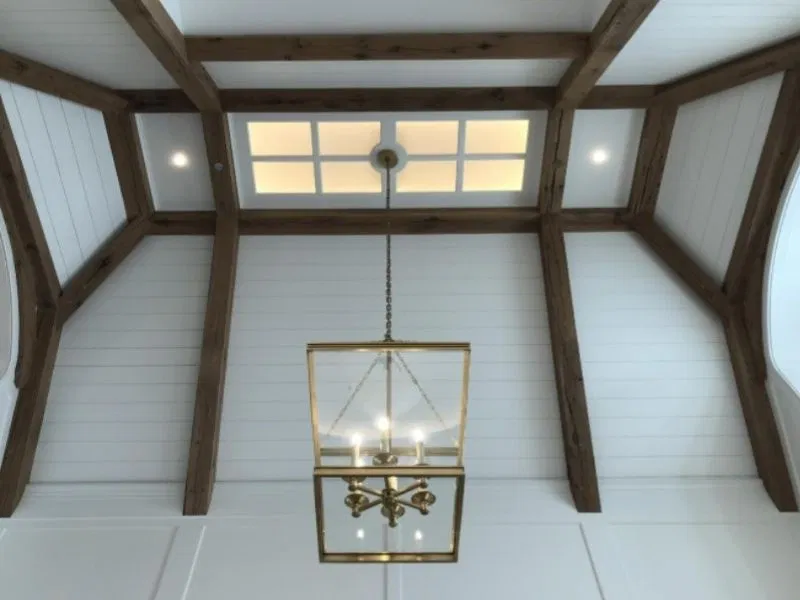
View Our Past Work
Take a look at some of our finest and most recent projects.
SPECIALTY AND RECLAIMED WOOD PRODUCTS & SERVICES
Bring your vision to life with Vintage & Specialty Wood. Our experts create unique, high-quality reclaimed wood products. We guide your project from start to end. With our extensive inventory and dedicated team, we’re here to help you create something truly extraordinary.
Ready to elevate your space with the timeless beauty of specialty and reclaimed wood? Connect with us and discover the Vintage & Specialty Wood difference.
Call Us Now:
(561) 405-6433
